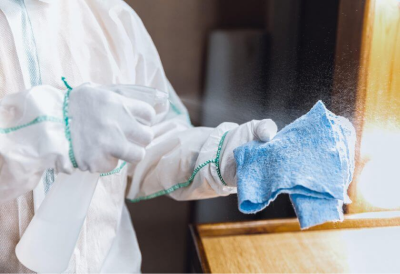In any medical facility, preventing the spread of infection is paramount. Whether it’s a hospital, clinic, or doctor’s office, the risk of infections spreading is always present. Not only does it endanger patients, but it also poses a threat to healthcare workers and visitors. Therefore, implementing robust infection control measures is essential to maintain a safe environment for all.
Here are some effective strategies to avoid and halt the spread of infection in your medical facility:
Hand Hygiene:
Proper hand hygiene is the cornerstone of infection control. Ensure that all staff members wash their hands regularly with soap and water or use alcohol-based hand sanitizers. Emphasize thorough handwashing techniques, especially before and after patient contact, and after touching any potentially contaminated surfaces.
Personal Protective Equipment (PPE):
Provide appropriate PPE such as gloves, masks, gowns, and eye protection to healthcare workers. Ensure that they are trained in the correct use of PPE and that it is readily available when needed. Encourage staff to wear PPE consistently, especially during procedures with a higher risk of exposure to bodily fluids or infectious agents.
Environmental Cleaning and Disinfection:
Maintain a clean and hygienic environment by regularly cleaning and disinfecting surfaces, equipment, and patient care areas. Use EPA-approved disinfectants and follow manufacturer’s instructions for proper usage. Pay particular attention to high-touch surfaces such as doorknobs, light switches, and medical equipment.
Isolation Precautions:
Implement appropriate isolation precautions for patients with known or suspected infections. This may include placing them in single rooms, using dedicated equipment, and limiting contact with other patients and healthcare staff. Adhere to standard, contact, droplet, or airborne precautions as indicated based on the type of infection.
Respiratory Hygiene/Cough Etiquette:
Educate patients and visitors about the importance of respiratory hygiene, including covering their mouth and nose with a tissue or elbow when coughing or sneezing. Provide tissues, no-touch receptacles for disposal, and hand hygiene stations throughout the facility.
Vaccination:
Encourage vaccination among healthcare workers, patients, and visitors to prevent the spread of vaccine-preventable diseases. Offer influenza vaccines annually and ensure that staff members are up-to-date with other recommended vaccinations.
Education and Training:
Provide regular education and training sessions on infection control practices for all staff members. Keep them informed about current guidelines, emerging infectious diseases, and best practices for prevention and containment.
Surveillance and Reporting:
Establish a system for monitoring and reporting healthcare-associated infections (HAIs) within your facility. Implement surveillance protocols to identify trends, outbreaks, or areas for improvement. Promptly report any suspected outbreaks to the appropriate public health authorities.
Visitor Restrictions and Screening:
Consider implementing visitor restrictions or screening protocols during outbreaks or periods of increased transmission. Limiting visitor access can help reduce the introduction and spread of infections within the facility.
Collaboration and Communication:
Foster collaboration and open communication among healthcare teams, patients, visitors, and community partners. Encourage everyone to play a role in infection prevention and control efforts and share information transparently to mitigate risks effectively.
By implementing these proactive measures, you can significantly reduce the risk of infections spreading within your medical facility. Remember, infection control is a collective responsibility that requires ongoing vigilance, adherence to protocols, and a commitment to maintaining a safe and healthy environment for all.





